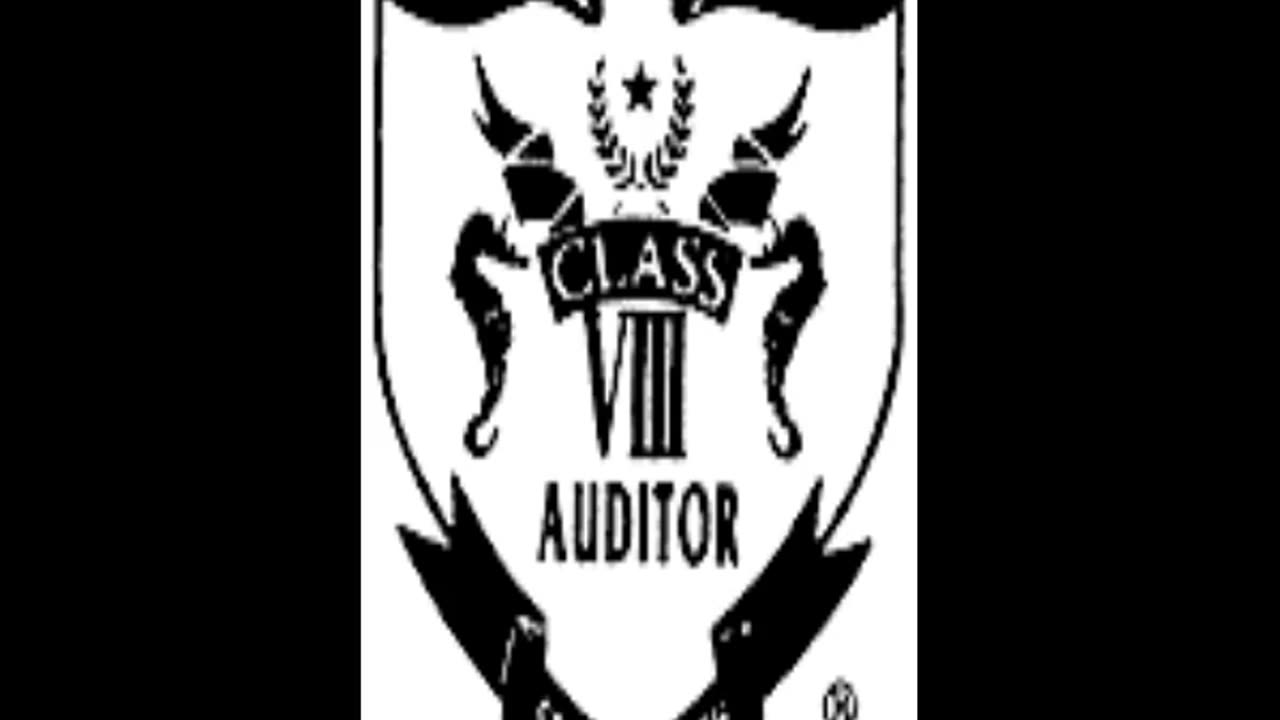Premium Only Content

Class VIII Course #7 Case Supervisor Do's and don'ts
Warning! Contains OT III Data!
Class VIII Course #7 Case Supervisor Do's and don'ts, the Total Rationale and Background of Auditing
Summary, Class VIII Course – Lecture No. 7 30 September 1968, titled Case Supervisor Do’s and Don’ts: The Total Rationale and Background of Auditing
Main Themes
Case Supervision Procedures
Hubbard stresses that a Case Supervisor (C/S) should not directly interact with the preclear (PC) or auditor but must rely on examiner reports before and after every session. This reduces missed situations, ensures proper technical quality, and provides an objective measure (needle, TA, PC’s comments).
Detecting Resistive Cases
Examiner notes often reveal when a PC has been audited over a Present Time Problem (PTP) or hidden standard. If the PC says “it didn’t handle what I came in for,” it signals something unresolved. Such indicators reveal resistive cases and explain long training stalls or thick review folders.
Handling Resistive Cases
Perform an assessment of the seven types of cases to locate the real outness.
Don’t overrun by endless rudiments or superficial handlings—find the basic chain.
Charge removal is the guiding principle: find the area of charge and discharge it through proper auditing actions.
Physical Illnesses and Engrams
Illnesses often tie to restimulated engram chains. They can be addressed through running secondaries and engrams in chain, not just key-outs. Hubbard criticizes shallow handling (e.g., “floating needle, thank you”) and insists on full erasure.
Engram Running & OT III
On OT III, if a case bogs, find a this-lifetime injury and push the PC into running it. This may lead into Incident I or other charge sources.
Body thetan phenomena complicate matters, but the principle remains: earlier, similar incident until erasure and F/N.
A PC can have whole grades mistakenly run on body thetans if out of valence; reality level must be repaired.
R6 Implants & Aberrations
Hubbard connects psychosomatic illnesses and aberrated second dynamic patterns to R6 implants, intended to solve galactic overpopulation by attacking sex and reproduction.
Overruns and ARC Breaks
Overrunning processes or rudiments leads to ARC breaks.
The correct handling is to locate earlier, similar incidents and rehab charge.
Overuse of S&Ds and excessive listing is condemned as “cutting the PC’s throat.”
Use of the E-Meter
Hubbard emphasizes the E-meter’s reliability as a spiritual instrument (electropsychometer). Reads must be interpreted with care: check for false reads, suppressed items, protests. The tone arm shows the mass density connected to the thetan. High TAs often result from overruns.
Key Takeaways
Case supervision must be folder-based and examiner-supported, not conversational.
The essence of auditing is removing charge, especially on the grades and engram chains.
Resistive cases require precise handling: find the chain, run it properly, and avoid shallow “itsa” handlings.
Physical illnesses can often be resolved through correct engram running.
Avoid technical additives and false practices (e.g., scanning body for BTs, running endless lists).
Proper application of standard tech and understanding of theory prevents technical degradation.
-
 22:00
22:00
Jasmin Laine
1 hour agoTrump’s Peace Medal Triggered the Biggest Liberal Meltdown of the Year
1257 -
 30:47
30:47
The HotSeat With Todd Spears
2 hours agoEP 221: Bonus Friday Episode! 2025 Spotify Recap
2.48K29 -
 LIVE
LIVE
LFA TV
18 hours agoLIVE & BREAKING NEWS! | FRIDAY 12/05/25
1,177 watching -
![MAHA News [12.5] Glyphosate Study Retracted (MONSANTO), Vaccine News (COVID), DMSO Chat](https://1a-1791.com/video/fwe2/02/s8/1/0/u/D/F/0uDFz.0kob-small-MAHA-News-12.5.jpg) DVR
DVR
Badlands Media
12 hours agoMAHA News [12.5] Glyphosate Study Retracted (MONSANTO), Vaccine News (COVID), DMSO Chat
9.14K -
 1:11:14
1:11:14
DeVory Darkins
4 hours agoJeffries SCRAMBLES After National Gas Prices hit record low amid AFFORDABILITY CRISIS
194K82 -
 56:44
56:44
The Quartering
4 hours agoSpam Calls Are Out Of Control, Candace Hits Rock Bottom & More Poison Food
33.4K78 -
 47:44
47:44
Tucker Carlson
4 hours agoRupert Lowe Warns of the Globalist Agenda Destroying the West and the Revolution Soon to Come
63.1K118 -
 1:16:03
1:16:03
Sean Unpaved
5 hours agoWill Miami Be "ODD MAN OUT" Of The College Football Playoff? | UNPAVED
21.4K1 -
 58:31
58:31
Jeff Ahern
2 hours ago $1.00 earnedFriday Freak out with Jeff Ahern
13.6K6 -
 27:03
27:03
The Kevin Trudeau Show Limitless
2 days agoThey're Not Hiding Aliens. They're Hiding This.
37.5K55